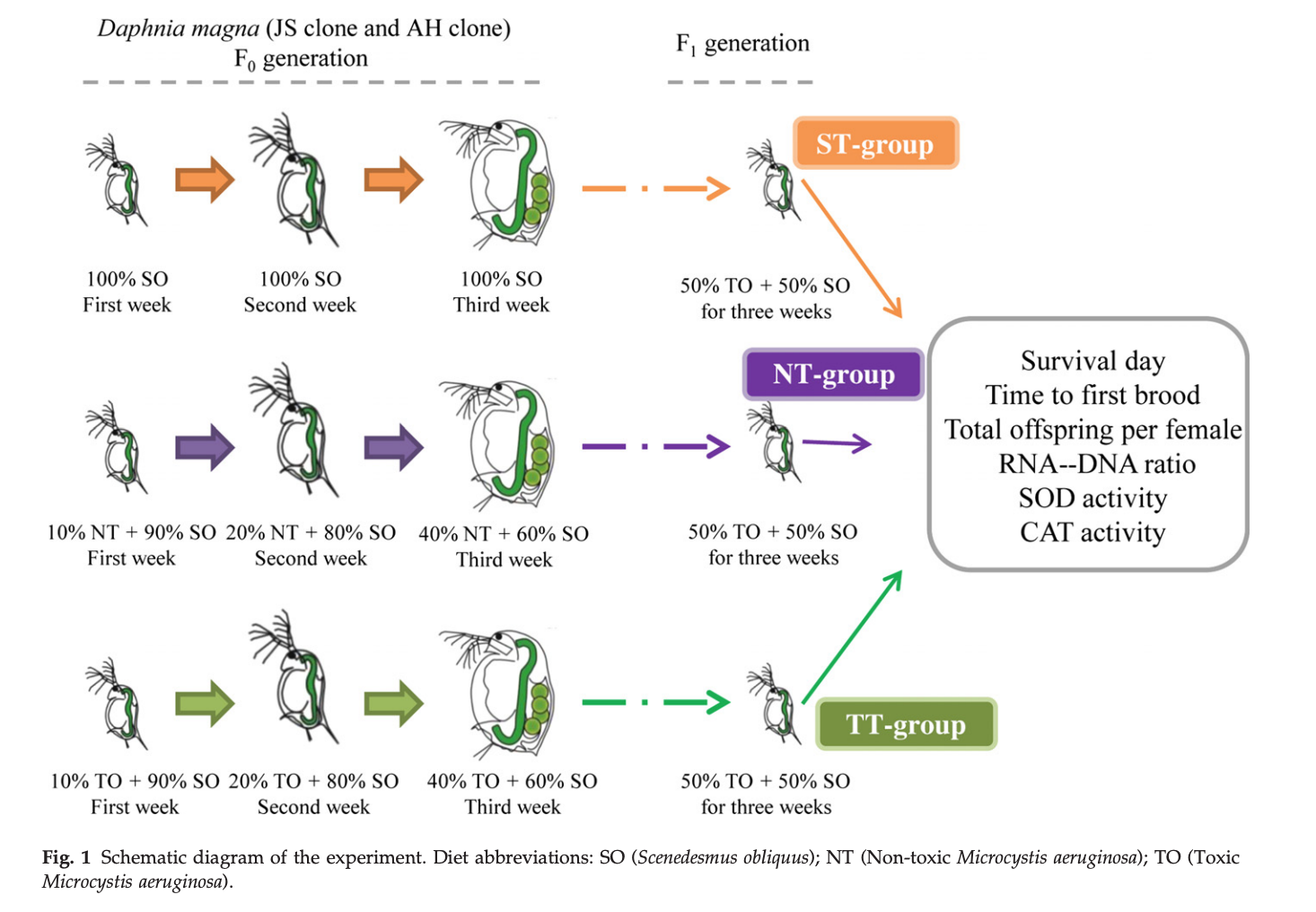Keyword: genotype

Lyu, K., H. Guan, C. Wu, X. Wang, A. E. Wilson, and Z. Yang. 2016. Maternal consumption of non-toxic Microcystis by Daphnia magna induces tolerance to toxic Microcystis in offspring. Freshwater Biology 61:219-228
Abstract
- Freshwater cyanobacterial blooms are a worldwide environmental issue. These blooms often comprise both non-toxic and toxic species and strains. Populations of some zooplankton, including Daphnia, have been shown to adapt locally to toxic Microcystis through maternal effects. However, Microcystis populations vary spatially and temporally in the absolute and relative abundances of non-toxic and toxic genotypes.
- We examined variation in induction of tolerance to toxic cyanobacteria in offspring from two Daphnia magna clones (JS and AH) fed diets containing Scenedesmus by itself or in combination with either a non-toxic or a toxic clone of Microcystis aeruginosa. The diets containing Microcystis included relatively more cyanobacteria within each week of the 3 week experiment (week 1–10%, week 2–20%, week 3–40%). Daphnia neonates were collected from these three treatments at the end of the third week and fed a diet containing Scenedesmus and toxic Microcystis for 3 weeks before a suite of life-history, physiological and biochemical measurements were made on the surviving animals.
- Neonates from mothers fed toxic and non-toxic Microcystis showed enhanced growth and reproduction compared to neonates produced from mothers fed only Scenedesmus. Our results showed that Daphnia neonates could be induced to tolerate toxic cyanobacteria when their mothers were fed diets containing non-toxic or toxic strains of cyanobacteria. Furthermore, elevated RNA–DNA ratios, superoxide dismutase activity and catalase activity in neonates fed diets containing non-toxic or toxic Microcystis clones suggested that the mechanisms behind these changes involved processes associated with metabolism and antioxidation.